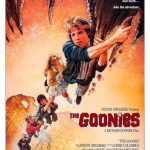Mad Max 2: The Road Warrior (1981)

“Mad Max 2: The Road Warrior” – A Gritty, Visionary Masterpiece of Post-Apocalyptic Cinema

In the annals of science fiction and action cinema, few films have left as indelible a mark as George Miller’s “Mad Max 2: The Road Warrior.” Released in 1981, this post-apocalyptic masterpiece is a bold, relentless, and visually stunning exploration of a world ravaged by societal collapse and the eternal struggle for survival.

Serving as a sequel to the 1979 cult classic “Mad Max,” “The Road Warrior” expands upon the bleak, dystopian universe established in the original film, plunging the audience deeper into a stark, desolate landscape where the remnants of humanity cling to the last vestiges of civilization. At the center of this unforgiving world is Max Rockatansky, played with a feral intensity by Mel Gibson, a former police officer turned loner and drifter, haunted by the ghosts of his past and driven by a primal desire for self-preservation.

One of the film’s greatest strengths lies in its worldbuilding, with George Miller crafting a richly detailed and utterly convincing post-apocalyptic environment. The movie’s production design, from the weathered, Mad Max-inspired vehicles to the rugged, sun-baked landscapes, creates a tangible sense of place that feels both familiar and foreign, grounding the fantastical elements of the story in a gritty, hyperreal aesthetic.
The film’s action sequences are the stuff of legend, with Miller’s direction showcasing a breathtaking mastery of visual storytelling. The high-octane car chases and intense hand-to-hand combat sequences are choreographed with a balletic grace and kinetic energy that elevates them beyond mere spectacle, injecting each moment with a palpable sense of danger and a thrilling sense of forward momentum.

At the heart of “The Road Warrior” lies a compelling, character-driven narrative that explores the themes of sacrifice, the search for redemption, and the fragility of human civilization in the face of unimaginable hardship. Max’s journey, both physical and emotional, is a gripping exploration of a man struggling to find his humanity in a world that has stripped it away, and Mel Gibson’s tour-de-force performance is the lynchpin that holds the film together.

Surrounding Max is a rich tapestry of supporting characters, each with their own distinct personalities and motivations. From the enigmatic Feral Kid to the charismatic yet ruthless Lord Humungus, the film’s ensemble cast breathes life into the harsh, unforgiving world, adding depth and complexity to the narrative.
Beyond its technical mastery and captivating storytelling, “The Road Warrior” stands as a visionary work of science fiction that transcends the genre’s traditional boundaries. Miller’s film is a bold, uncompromising exploration of the human condition, a cautionary tale about the consequences of unchecked greed and the fragility of the social order. The film’s themes of environmental devastation, the loss of community, and the primal struggle for survival resonate powerfully in the modern era, lending the film a timeless quality that continues to captivate and challenge audiences.
In the pantheon of post-apocalyptic cinema, “The Road Warrior” stands tall as a landmark achievement, a film that has inspired countless imitators but has never been truly surpassed. George Miller’s masterful direction, coupled with the film’s stunning visuals and unforgettable characters, have cemented its status as a cinematic classic, a work that continues to captivate and inspire audiences decades after its initial release. “The Road Warrior” is not merely a film – it is a visceral, immersive experience that leaves an indelible mark on the viewer, a testament to the power of cinema to transport us to the furthest reaches of the human imagination.










